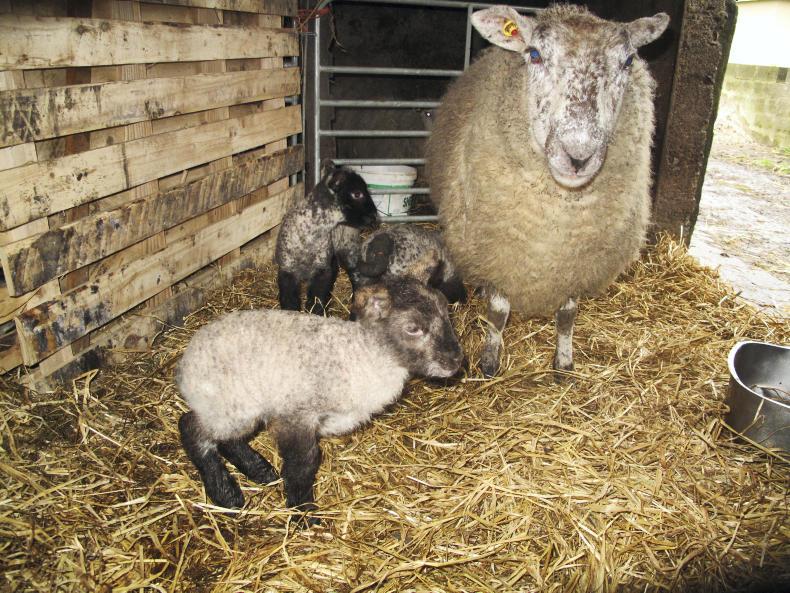Weather challenges
Wintry showers are forecast to remain over the weekend and possibly into next week, leaving chill or hypothermia a high risk in young lambs. There are two degrees of severity. Mild hypothermia occurs when a lamb’s temperature is between 37°C and 39°C and is typically caused by them being born into a cold environment or consuming insufficient colostrum to generate heat. It can be usually rectified by warming the lamb and ensuring it receives colostrum or milk.
Hypothermia is much more serious where the temperature drops below 37°C, with treatment influenced by the age and condition of lambs. If newborn lambs are still able to suckle, then drying, warming and stomach tubing with colostrum should suffice. However, if the lamb is very weak and unable to suckle, irrespective of what age, then colostrum or milk should not be given as there will be a higher risk of milk getting into the lamb’s lungs.
The fastest treatment route here is getting a rapid source of energy into the lamb. This is best achieved by administering a glucose injection into the lamb’s abdominal cavity (stomach). Veterinary advice is to administer 10ml of a 20% glucose injection per kg bodyweight (50ml for a 5kg lamb). Warm the solution to body temperature and, if diluting, add recently boiled water that has been allowed to cool or sterile water.
Administer the injection 1in out and 1in down on the right-hand side of the lamb’s navel, with the solution injected into the abdominal cavity (inside the skin) and not the gut. Do this by inserting the needle downwards at a 45° angle. The lamb should only be warmed once the injection has been given, avoiding overheating. This should bring the lamb back to a state of being able to suckle or be stomach-tubed.
Supplementing ewes
It is important that freshly lambed ewes are adequately supplemented to ensure milk yield is not compromised. Ewes with freshly born lambs and access to sufficient grass will still benefit greatly from 0.5kg to 0.8kg concentrate supplementation daily until weather improves. Higher levels may be warranted where underfoot conditions are poor and grass utilisation is low. It will also help safeguard against grass tetany.
Where turnout is delayed, twin-suckling ewes in good body condition and offered ad-lib access to average- to moderate-quality silage of 68 to 70 DMD (or top-quality hay) will require concentrate supplementation in the region of 1.2kg to 1.5kg concentrates daily, rising to 1.5kg to 1.7kg where ewes are in poor body condition. Single-suckling ewes on the same forage will require 0.5kg to 0.7kg concentrate, rising to 1kg for thin ewes. A similar feeding rate will apply for ewes and lambs outdoors with no access to grass.
Remember that access to fresh water is vital for lactating ewes who can drink upwards of 10l daily. This should be especially borne in mind when ewes are in temporary penning without access to a continuous water supply.
Sheep census
The final date for submitting your sheep census online via the Department’s agfood facility is Friday 14 February. The date for submitting hardcopy returns has passed, meaning the online route is the only available option now.






 This is a subscriber-only article
This is a subscriber-only article









SHARING OPTIONS: